Time Enough for Dance
Anna Marie Shogren unpacks the ideal of “evening-length” dance, the quirks of audience attention and institutional prestige, and what it means to make fully realized work.
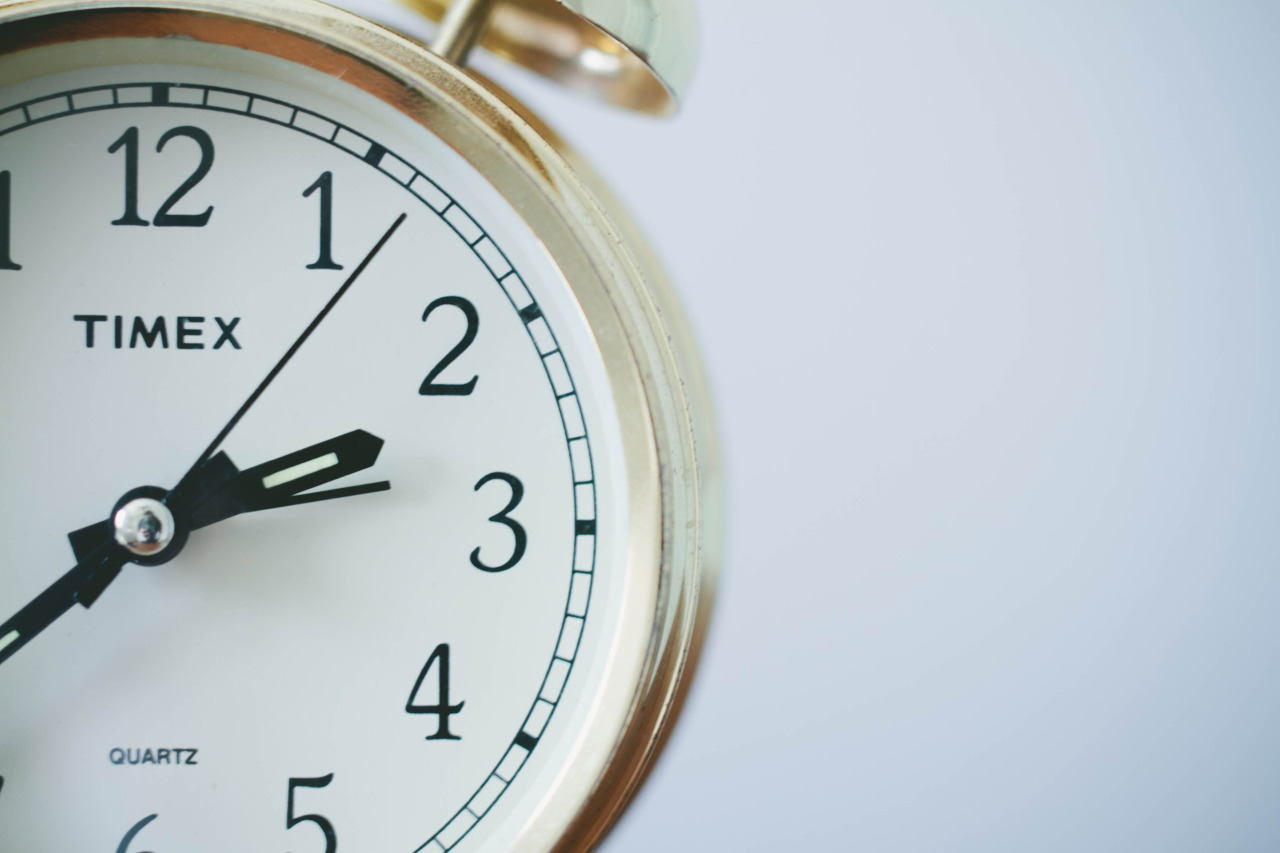
We humans are fascinated by time. It is a cause for much wonder and preoccupation. We attempt to gauge it, worry we’ve lost it, watch it go by. The artist who works in time tries to balance audience engagement through energetic features and rhythm, in an attempt to shape the experience of its passage. Both physically and conceptually, time underlies all other content. Less than careful temporal choices can significantly alter the effectiveness of the work. Imagine watching Lamorisse’s red balloon follow that little boy for hours instead of a concise 34 minutes; change the soundtrack, and it could easily be a horror flick. And what might Trisha Brown’s Spanish Dance have been if not so cleverly fitting the size of the room and length of the pop tune?
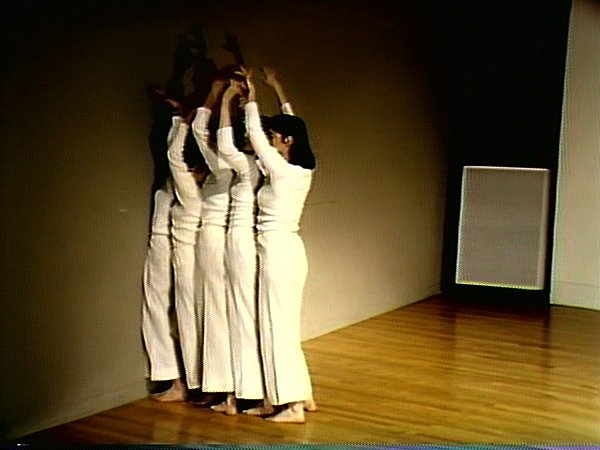
Yet, for a dance artist, evening-length work seems to reign as ultimate goal, the default durational destination. “Evening-length” refers to work with a run-time ranging from 45 minutes to an hour-and-a-half in length—a timeframe substantial enough to (usually) stand alone as an evening’s experience. There are some obvious benefits to such performance from the vantage of an audience member: it is a palatable size, a reasonable amount of time to lose if the work doesn’t agree with you. The form is favorable for presenters too: it is a functional package and easily marketable. Evening-length work more readily qualifies artists for production in the most prestigious venues, because such a designation suggests that the work in question is significant enough to stand on its own, that the artist can draw an audience and has earned the standing to specify a controlled surrounding for their presentation. “Evening-length” also carries a sense of finality, of something fully realized as opposed to an apologetic work-in-progress. Such work has, presumably, become what it was intended to be.
Look at the current state of the medium, though, and you see funding has dwindled, venues have disappeared, and those spacious evening-length gigs are harder to come by. Casual, untraditional, and shared-bill opportunities, on the other hand, are in abundant supply and have much to offer—a sense of community, variety, and contrast. Fun. Multi-artist performances suit the way we, as viewers, process information as well. Overstimulation in all areas of our lives is rampant; people have become adept at differentiating and partitioning vast amounts of visual and experiential material expeditiously. I saw a statistic recently stating that Americans watch an average of one hour and 16 minutes of video on a device per day. That amounts to an “evening-length” of cats meeting puppies, John Stewart, CNN, people’s children, memes and more memes, encircled by ads and comments—all while out in the world, going about our days. And we still remember these units of experience individually, don’t we?
What’s more, it’s worth raising the question: Does an artist’s work every truly stand alone? I can think of a number of times when my perception of a piece was entirely clouded by hunger. Perhaps the time and preparation going into works at these collective events is less; perhaps artists on the bill would like the audience to know that the work is still in some stage of process, or that it is an excerpt of a longer, more complete piece. These are the apologies we give for shorter works, but are they needed? Isn’t it possible for a person to still be moved by an in-progress or impromptu showing? Couldn’t even a single gesture, if well timed and situationally nuanced, affect thought, attention, enjoyment? And isn’t it also possible that the audience may never follow up to see the final, more complete work anyway?
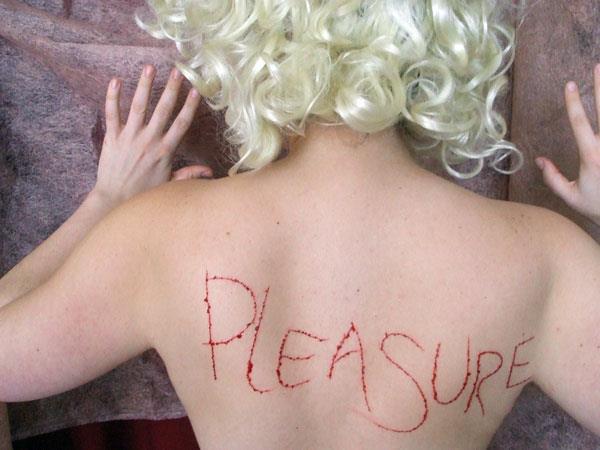
Feeling clearly contrary to the popular acceptance of such a generalized duration, I reached out to a few people who, I suspect, have questioned these ideal temporal dimensions as well. Nastalie Bogira, for example, dance artist and curator of Pleasure Rebel, has been pursuing this conversation for some time. Her experimental series, held at Minneapolis’ Bryant Lake Bowl, offers artists in a broadly defined queer community a platform to create a 20-minute piece, somewhere between the five-to-ten minutes common for pieces on shared bills and the full 45- to 60-minute evening-lengther.
She explains, “Creatively, my work felt really stifled, both by the time constraint — I felt my ideas didn’t have space to breathe and develop — and by the constraint of bumping up against other works (sometimes very different, and mostly very boring) and their audiences (again, different and usually boring. I’m a snob.). I wanted a space to build an experience that was intentional and all about my work. I didn’t [find those opportunities] with my own work; I made Pleasure Rebel, in many ways, to be the thing I wished I’d had, in between those two structures.”
She adds, “In general, I’ve always preferred long-form work to short stuff, both as a performer/maker and as a viewer. I’m a marathoner.”
Snob or not, a marathoner or a sprinter, I like her larger point. We are all so intrinsically different. Resting heart rates range between 60 and 100 beats per minute; we linger in various stages of the nervous system and rely differently on our slow or fast-twitch muscles. Physiologically, we each feel time in unique ways. (Not to mention, we all desire to feel unique — or at least that is what the motivational posters say.)
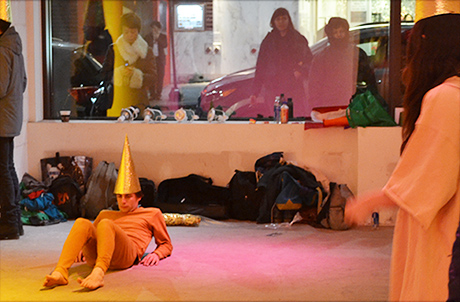
“What space does your work need around it in order for it to be your work?” asks choreographer Laurie Berg. She and Liliana Dirks-Goodman run the generous and model-defying, Brooklyn-based performance series, AUNTS. AUNTS events offer multiple artists an opportunity to use time as they wish, anywhere from “5 minutes to 5 hours in length”, concurrently within a shared time and space, in conjunction with other performance, art, and audience interplay.
“Giving up some power towards a greater whole can be frightening. In some ways that is the liberating and oppressive aspect of AUNTS: you have the freedom to fully experiment while simultaneously allowing for the possibility that your work gets swallowed by the [larger] event. … Even within the format of the typical evening-length solo show, there is room to question the structure of that model: e.g. how a piece begins and ends, what procedures occur before and after a work (either of your own doing, or to do with the particular space you are in). The same questions apply to AUNTS. How is the space already in motion as the performers and the audience enter? [This] determines how one might navigate through the rest of the evening.”
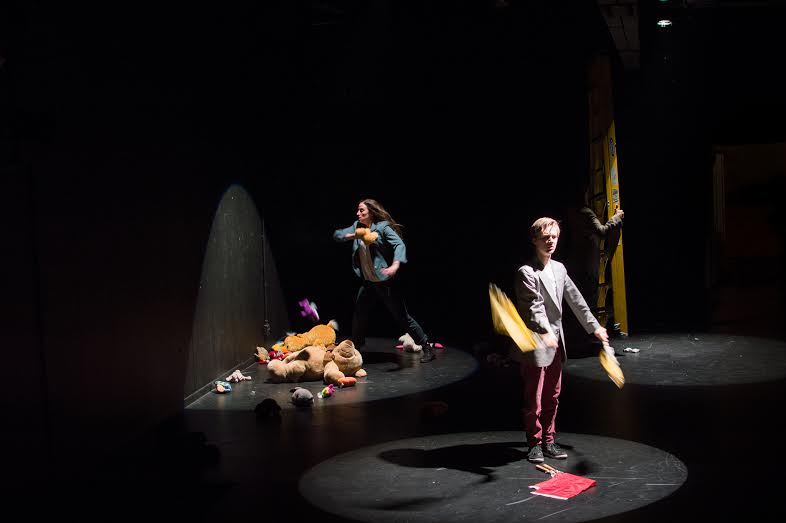
Emily Gastineau, Minneapolis artist and part of Fire Drill, who premiered a first “proper” evening-length show this June at the Red Eye Theater, spoke to that general expectation. “I’ve heard people say that adults can really only pay attention for 20 or 30 minutes so, in evening-length works, you often see a drop-off point that’s so designed for the viewer to take a break. It can be a struggle to keep going past that point. For that reason, I appreciate really long works (like Nature Theater of Oklahoma’s Life and Times: Episode One, which was three-and-a-half hours), because I knew: a) I would have to prepare myself for viewing endurance, and b) it was expected that I would tune in and tune out throughout the course of the show. As a viewer, I prefer works that build this [occasional lapse] in, rather than trying and failing to keep my attention continuously. Our current work [with Fire Drill] is effectively aping that dynamic.”
Arwen Wilder, half of revered duo HIJACK, had made dance works for 18 years before a friendly dare prompted the construction of an evening-length piece. “In college, when Kristin [Van Loon] and I were first working together, we studied and were massively influenced by Absurdist Theater, poetry, and short-short stories — forms which thrive on precision, strike, and brevity. Also, stealing wisdom from pop-song writers, many of our dances are three minutes long.”
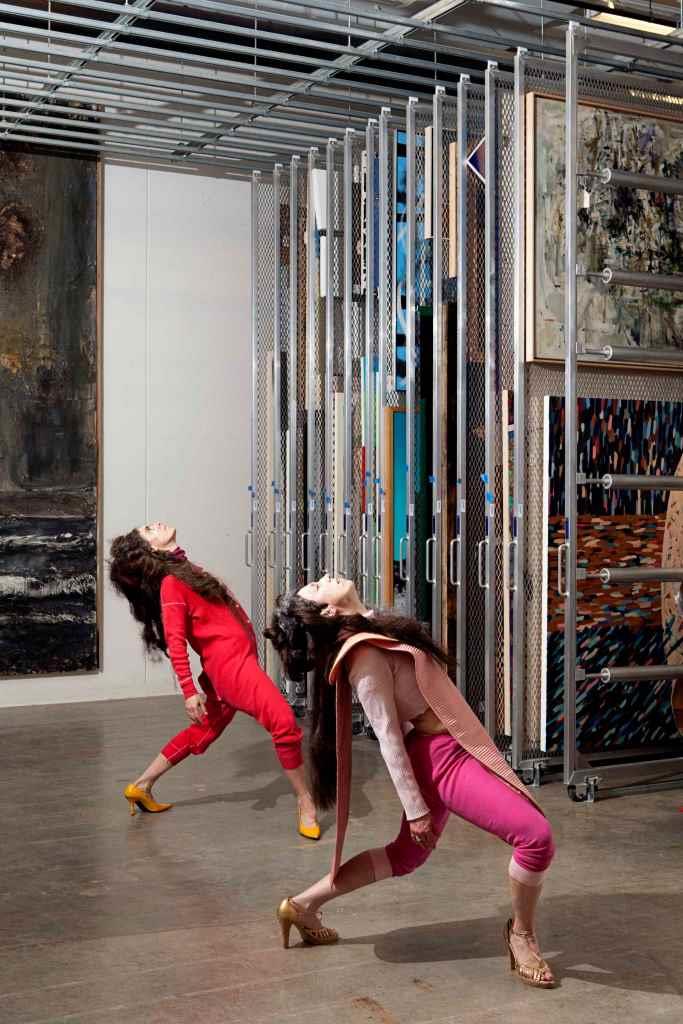
“Because we believe in discovering through the choreographic process,” Wilder says, “there are many things we do not determine before we actually make a piece. For example, we have tried starting with music, or with a set cast. Sometimes the time we have for creation is the most defining thing we know ahead of time.”
“When visual artists are commissioned to make something decorative, the commissioner often defines the size of the piece,” she goes on. “If a visual artist is making their own work, we would never expect them to make pieces any size other than what interested them. It is the same in journalism and other writing, in music, and probably all forms. Money often defines the size or length of something [made]. This is sometimes stifling of the work’s honesty and specificity to itself.”
So, for HIJACK and for Trisha, I’ll close with one more generalization.
Anna Marie Shogren is an artist and dancer whose work has been seen around Minneapolis, NY, along both US coasts, and Iceland. Previous to Mn Artists, she has written with Hunter College, InDigest, Critical Correspondence, and NY Arts Magazine. She is performing this summer in Closer with the Body Cartography Project and in Morgan Thorson’s Still Life.